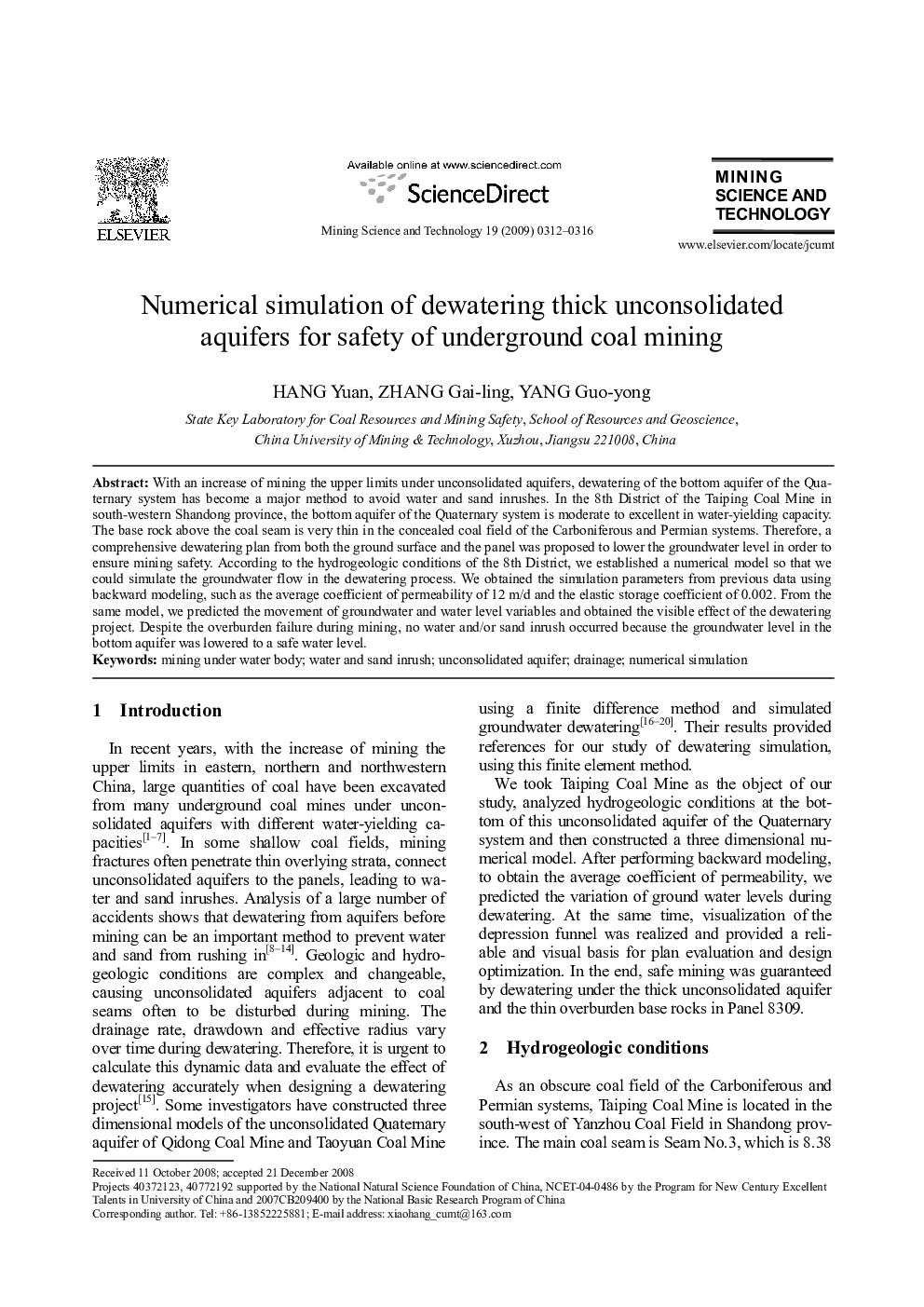| Article ID | Journal | Published Year | Pages | File Type |
|---|---|---|---|---|
| 294795 | Mining Science and Technology (China) | 2009 | 5 Pages |
With an increase of mining the upper limits under unconsolidated aquifers, dewatering of the bottom aquifer of the Quaternary system has become a major method to avoid water and sand inrushes. In the 8th District of the Taiping Coal Mine in south-western Shandong province, the bottom aquifer of the Quaternary system is moderate to excellent in water-yielding capacity. The base rock above the coal seam is very thin in the concealed coal field of the Carboniferous and Permian systems. Therefore, a comprehensive dewatering plan from both the ground surface and the panel was proposed to lower the groundwater level in order to ensure mining safety. According to the hydrogeologic conditions of the 8th District, we established a numerical model so that we could simulate the groundwater flow in the dewatering process. We obtained the simulation parameters from previous data using backward modeling, such as the average coefficient of permeability of 12 m/d and the elastic storage coefficient of 0.002. From the same model, we predicted the movement of groundwater and water level variables and obtained the visible effect of the dewatering project. Despite the overburden failure during mining, no water and/or sand inrush occurred because the groundwater level in the bottom aquifer was lowered to a safe water level.
